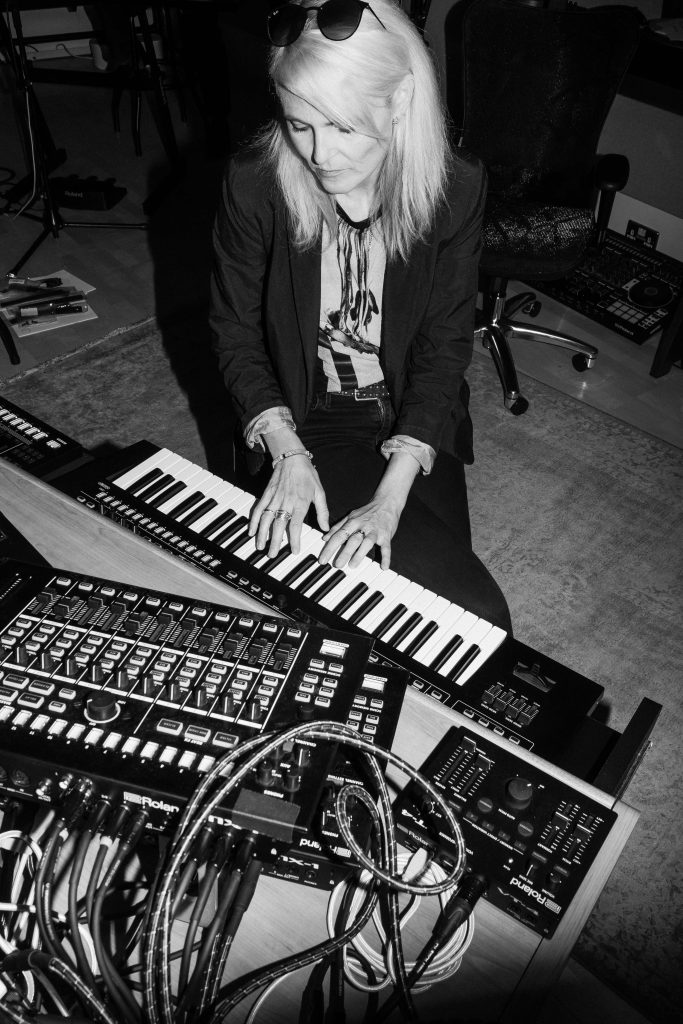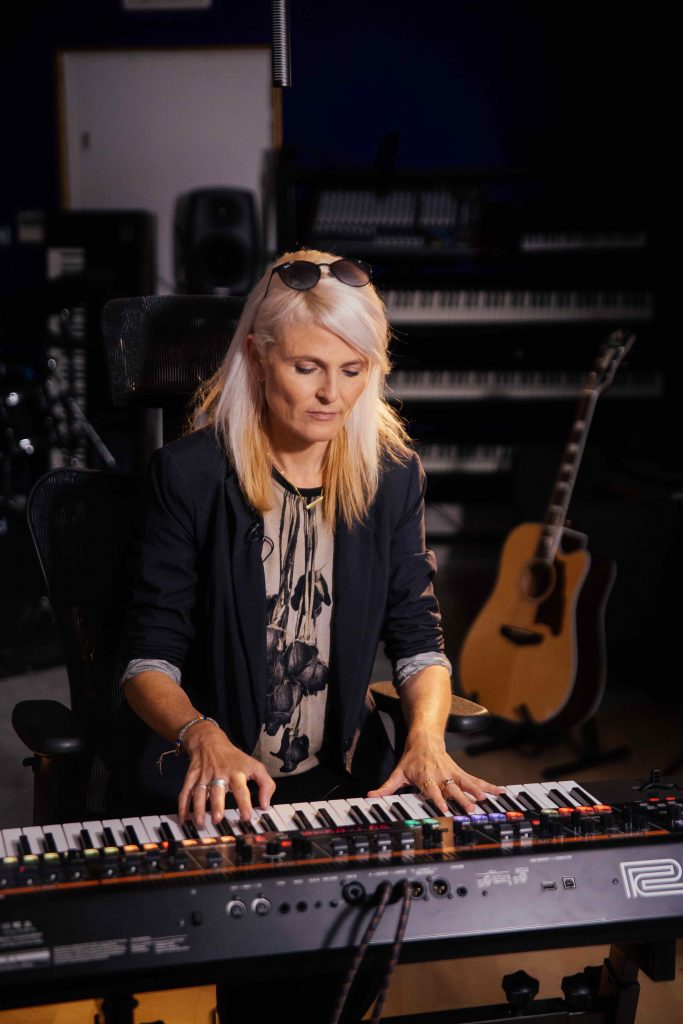Formed in 1995, UK act Faithless pooled the skills of producer Rollo, vocalist Maxi Jazz, and multi-instrumentalist Sister Bliss. During a three-decade career, they’ve released seven albums, with sales of over 15 million units. The group’s widescreen sound blends aspects of hip-hop and house with ambient interludes and indelible hooks. It’s a mixture that made Faithless festival and radio favorites.
Sister Bliss walks us through the gear and stories behind classic tracks like “Salva Mea,” “Insomnia,” and others. Learn how vintage Roland synths and modules powered the group’s sound from its debut album, Reverence, through its latest, All Blessed.
Reverence for the Past
Of two tracks from Reverence, “Insomnia” and “Salva Mea,” Sister Bliss has strong memories. “We used a mix of digital gear and old school analog to create the sounds on our first album. We had a JV-1080 and used it to get pads and glacial sounds.”

Indeed, Faithless’ debut boasted an eclectic approach to electronic songcraft. “It was like a mixtape with your favorite dance track, chillout track, hip-hop track, and so on.”
Her love for analog synths extends to their quirks as well. “We had two JUNO-106s, each with its own flavor, which we used to have a lot of fun with. Sometimes it was a bit temperamental, but I also think that’s the beauty of electronic music. They’re not predictable, and they gave our records a richness.”
Keeping it Fresh
After the success of Reverence, the group insisted on not repeating themselves. “‘God is a DJ’ was the first single from our second album, Sunday 8PM. We felt we had to push things forward.” This ambition led them to experiment with new approaches in the studio. “It forced us to explore different sonic avenues. The sound was a sample we layered up with sounds from a JUNO-106, and our trusty JV-1080.”
"We couldn't have done what we've done without drum machines and synthesizers."
Years later, Sister Bliss remains pleased with the results. “It’s one of my favorite pieces of music to play live.” She goes on to praise the contributions by Faithless’ original lineup. “Maxi’s lyrics are outstanding. It was a mix of analog, sampled, and our beloved synthesizers.”
Adding to the appeal of “God is a DJ” are some left-field elements. “It’s got a bit of acid house on a track that isn’t acid house at all,” Sister Bliss says.

Another piece of Roland gear provided the track’s substantial low end. “We used an SH-101 for the bassline,” reveals Sister Bliss. “We kept it suppressed before it launches into the chorus.”
Setting Parameters for No Roots
Faithless’ fourth album No Roots entered the charts at number one. It was the group’s first to achieve the distinction. The release came about during a tumultuous global moment, evidenced by single “Mass Destruction.” “We were right in the middle of the Iraq War,” she recalls, “and felt we had to say something about the world we were living in at the time.”
The music that became the basis for the single was a remix that by P*Nut. “It felt so groovy and funky we decided to keep that version as a single version.” There was another motivation as well, one that harkened back to the group’s desire to avoid repetition. “No Roots in one key all the way through,” Sister Bliss reveals. “We set parameters to work in.”
All Blessed
That penchant for futurism extends to their latest album, All Blessed. Of “I Need Someone,” Sister Bliss says, “I had this chord sequence on an organ which gave it the feeling of a hymn.” It’s a style for which she has a great affinity. “I love chords that run in a sequence that can be the same for verse and chorus. It’s got a hypnotic vibe to it.”
"We had two JUNO-106s we used to have a lot of fun with. They're not predictable, and they gave our records a richness."
According to Sister Bliss, the single “Synthesizer” evokes “everything we love in electronic music.” She adds, “We’ve blended our sound with acoustic instruments along the way. But we couldn’t have done what we’ve done without drum machines and synthesizers.”
Back to the Old School
As the first release by the group in a decade, they pulled all the old school stops. “We decided to switch on our dusty, analog synths and brought in little touches.”
Sister Bliss sees the new record as an important statement of purpose for the group. “We wanted All Blessed to sound like Faithless, yet completely of the time.” She still feels blessed by the group’s lasting connection to their audience. “I very much hope people come on that journey, as they have done since we launched Reverence all those years ago.”







